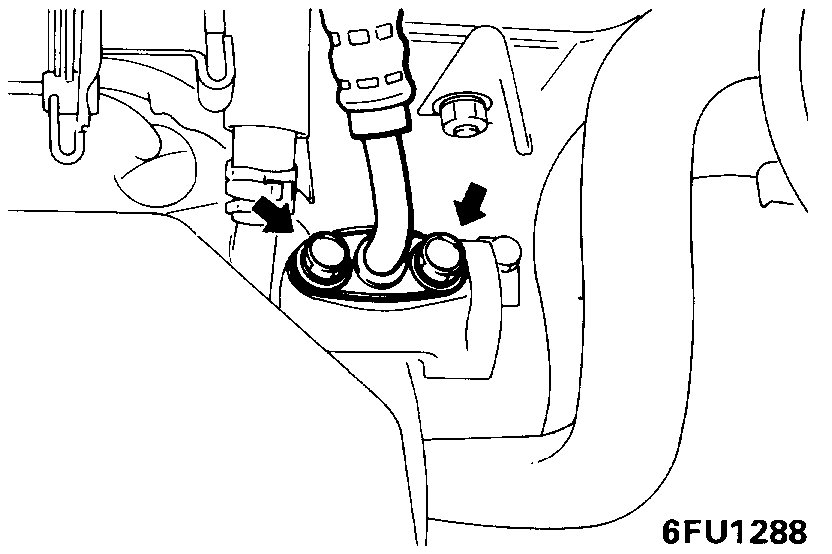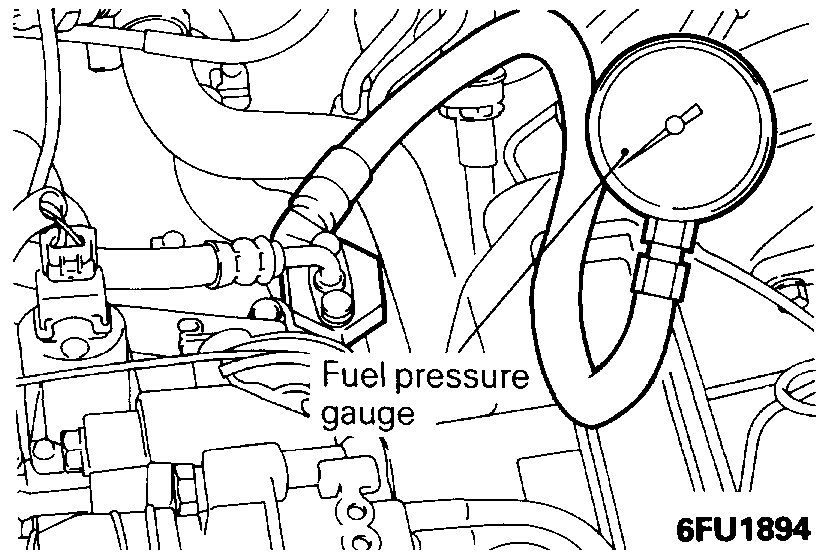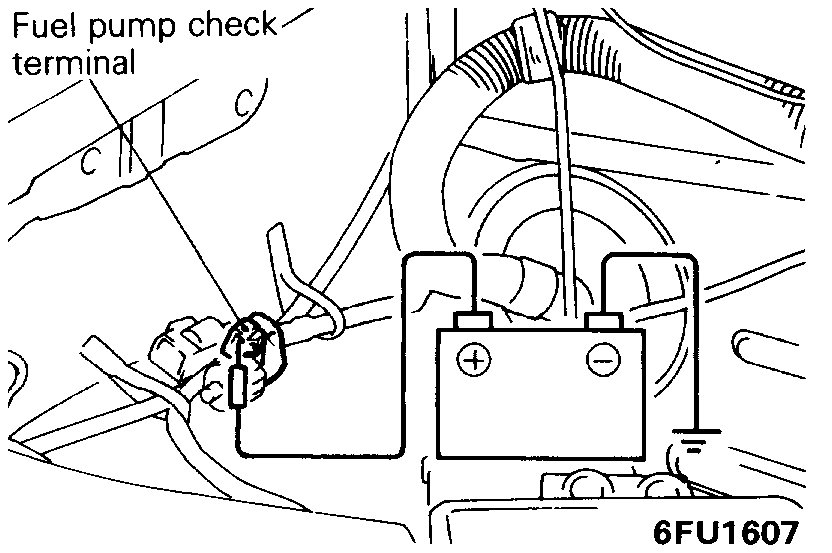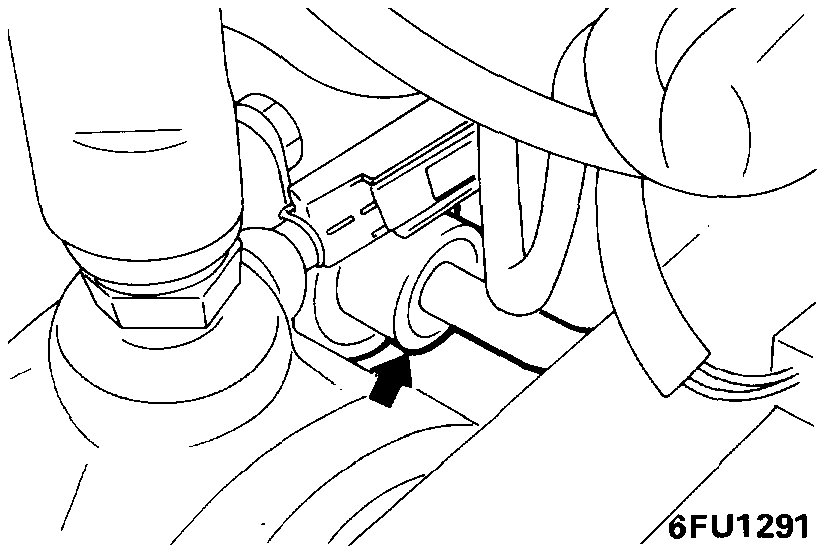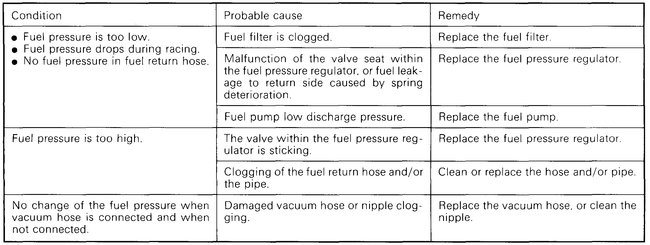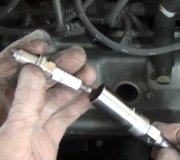Hi and thanks for using 2CarPros.
If the plugs are black, that is an indication too much fuel is being injected into the engine. The first thing I would suggest is to confirm the fuel pressure isn't too high. However, you should also see if there are any diagnostic trouble codes stored in the computer which could indicate a different issue.
Here is a link that shows how to retrieve Mitsubishi OBD1 trouble codes:
https://www.2carpros.com/articles/mitsubishi-trouble-code-definitions-and-retrieval-procedure-for-odb1-system
If there are no codes, check fuel pressure.
Here is a link that shows how to check pressure and a fuel pressure regulator:
https://www.2carpros.com/articles/how-to-check-fuel-system-pressure-and-regulator
Here are directions showing how to check pressure specific to your vehicle. The attached pictures correlate with these directions.
______________________________________________________________________
FUEL PRESSURE TEST
1. Remove all remaining pressure from inside the fuel pipe line to prevent splash of fuel.
- Disconnect the fuel pump harness connector.
- Start and run the engine until it stalls, then turn the ignition switch to OFF.
2. Disconnect the battery negative terminal.
Picture 1
3. Disconnect the fuel high pressure hose at the fuel rail side
CAUTION: Cover the hose connection with shop towel to prevent splashing of fuel that could be caused by residual pressure in the fuel pipe line.
4. Place the MlT215144 adapter on the end of the fuel rail, then attach the fuel high pressure hose to the adapter using the bolts supplied with the MlT21O196 fuel pressure test assembly.
Picture 2
5. Attach one end of the fuel hose supplied with the MlT21O196 to the quick-disconnect fitting on the M lT21 51 44 adapter. Attach the other end of the hose to the fuel pressure gauge.
6. Connect the battery negative terminal.
Picture 3
7. Connect a jumper wire to the terminal for activation of the fuel pump and to the positive (+) terminal of the battery to activate the fuel pump. With fuel pressure applied, check to be sure that there is no fuel leakage from the fuel pressure gauge and the special tool connection part.
8. Disconnect the jumper wire (from the terminal for activation of the fuel pump) to stop the fuel pump.
9. Start the engine and let it idle.
10. Measure the fuel pressure during idling.
Standard value: Approximately 270 kPa (38 psi) at curb idle
Picture 4
11. Disconnect the vacuum hose from the fuel pressure regulator, and then measure the fuel pressure while using a finger to plug the end of the hose.
Standard value: 330-350 kPa (47-50 psi) at curb idle speed
12. Check to be sure that the fuel pressure during idling does not decrease even after the engine is raced a few limes.
13. Use a finger to gently press the fuel return hose while repeatedly racing the engine, and check to be sure that there is fuel pressure in the return hose also.
NOTE: There will be no fuel pressure in the return hose If there is insufficient fuel flow.
14. If the fuel pressure measured in steps (9) to (12) deviates from the standard value range, check for the probable cause by referring to the table below, and then make the appropriate repair.
15. Stop the engine and check for a change of the value indicated by the fuel pressure gauge. The condition is normal if there is no decrease of the indicated value within two minutes.
NOTE: If there is a decrease of the indicated value, monitor the speed of the decrease, and, referring to the table below, determine the cause of the problem and make the appropriate repair.
Picture 5
Picture 6
16. Reduce the internal pressure of the fuel pipes and hoses.
17. Disconnect the fuel pressure gauge and the special tool from the fuel rail.
CAUTION: Because there will be a slight amount of remaining pressure in the fuel pipe line, use rags to cover so that fuel doesn't splatter.
18. Replace the O-ring at the end of the fuel high-pressure hose with a new one.
19. After connecting the fuel high-pressure hose to the fuel rail, tighten the installation bolt at the specified torque.
Tightening torque: 4 - 6 Nm (3 - 4 ft lb)
20. Check to be sure that there is no fuel leakage.
- Apply battery voltage to the terminal for activation of the fuel pump so as to activate the fuel pump.
- With fuel pressure applied, check for leakage of the fuel line.
Let me know if this helps. For some reason, too much fuel is being injected into the engine. If pressure is good and within the manufacturer's specs, it could be leaking injectors. However, it is hard to believe they all went bad at the same time.
See what you find and let me know. If you have additional questions, let me know.
Take care,
Joe
Images (Click to make bigger)
SPONSORED LINKS
Sunday, February 24th, 2019 AT 5:58 PM
